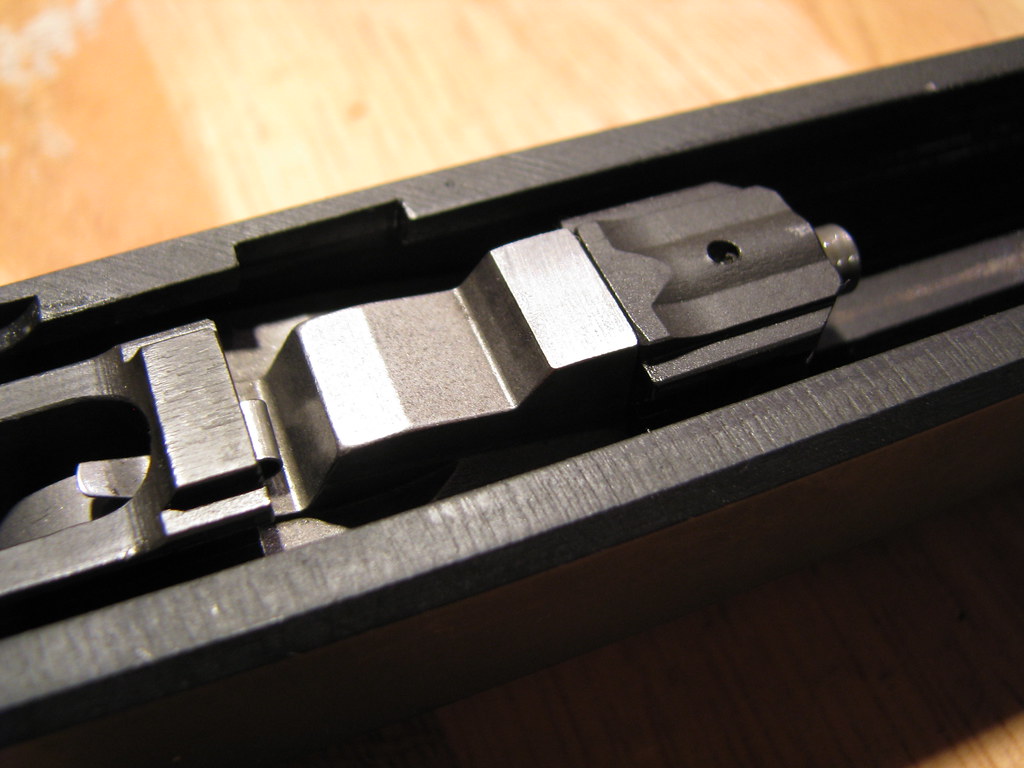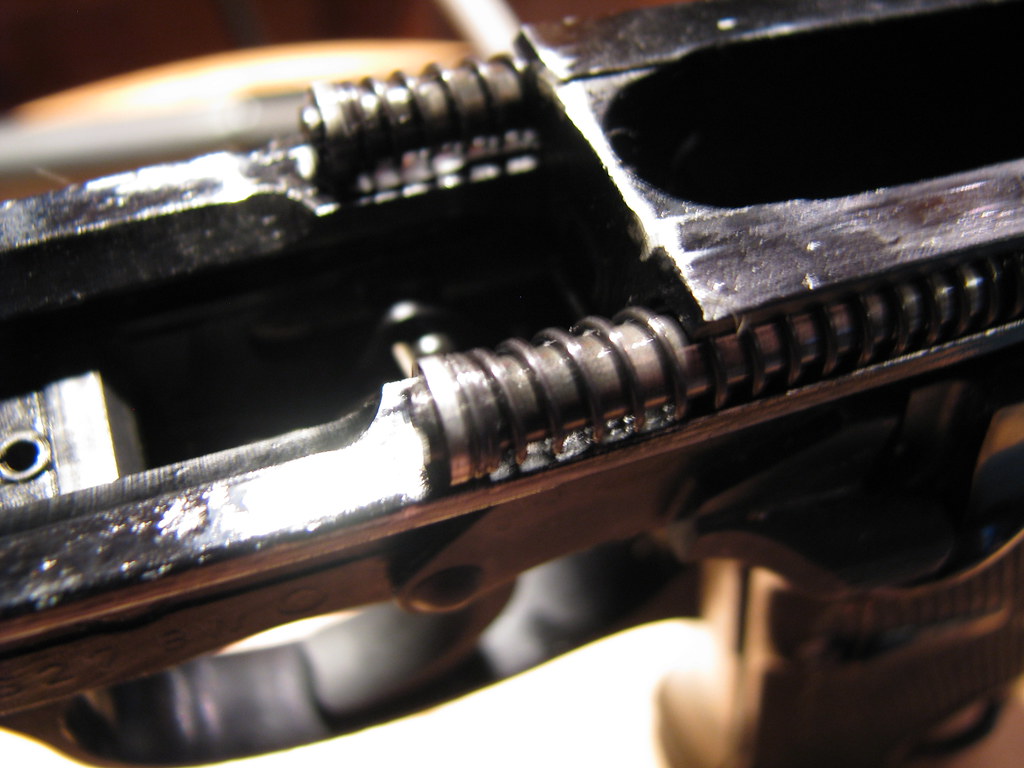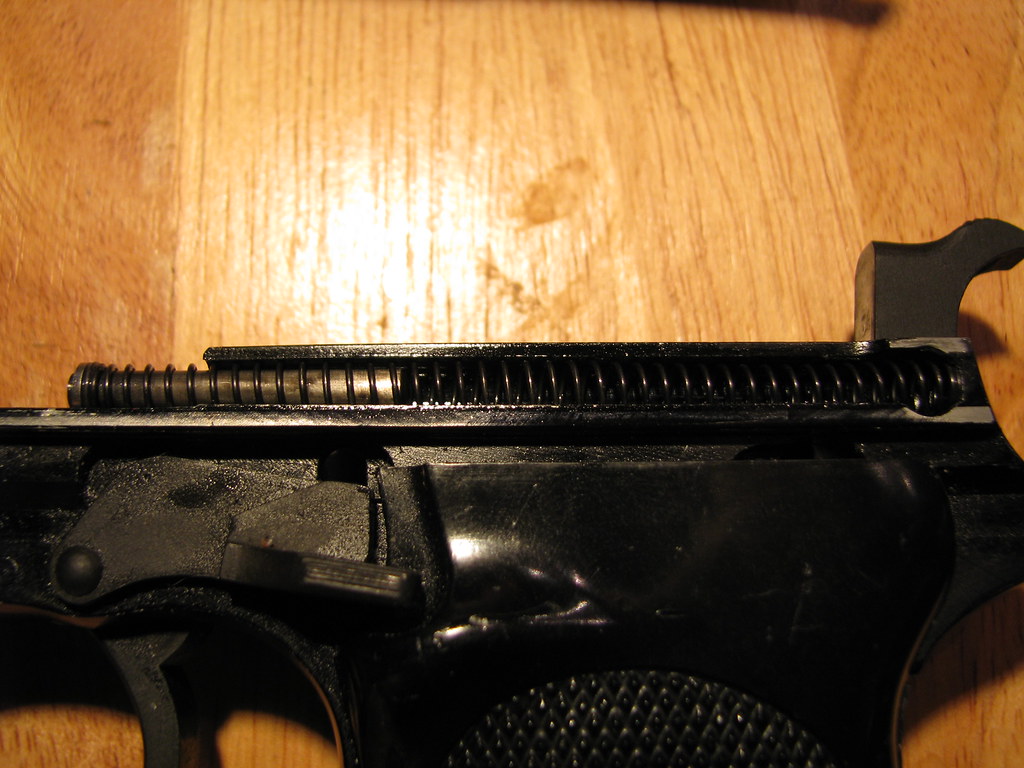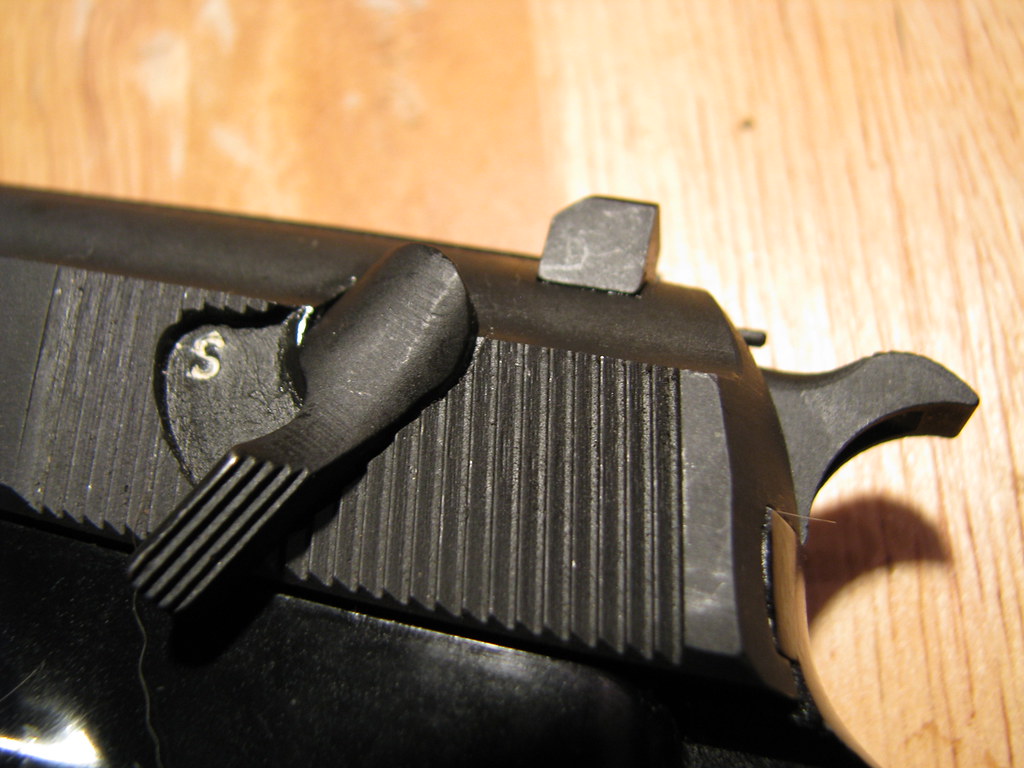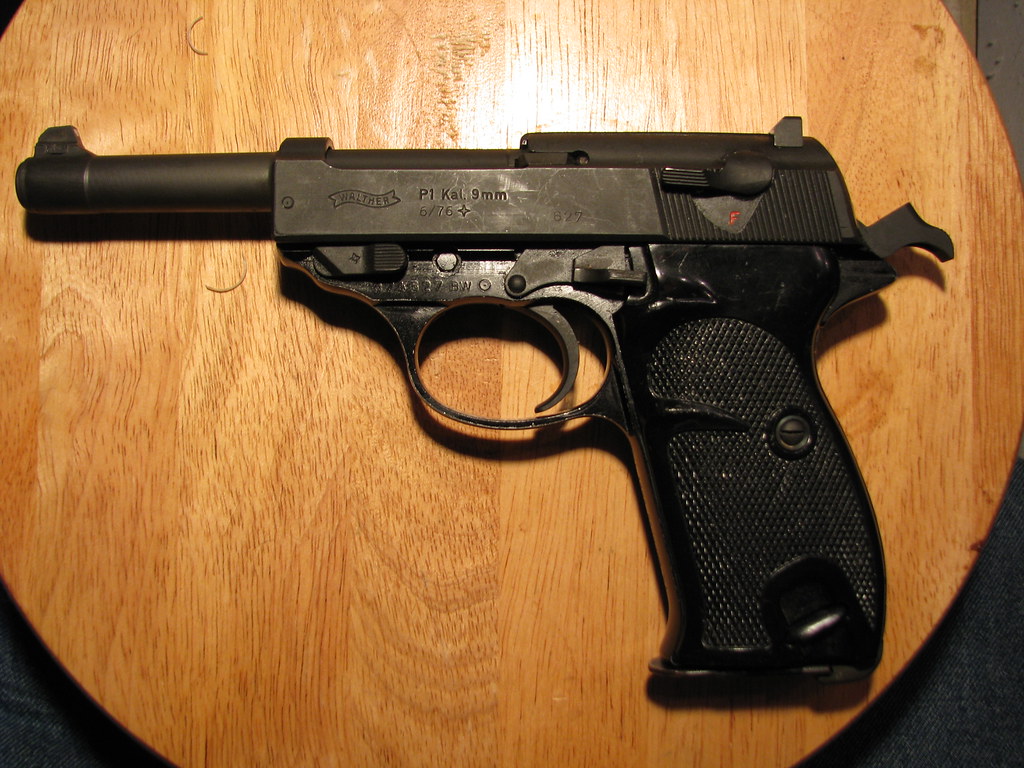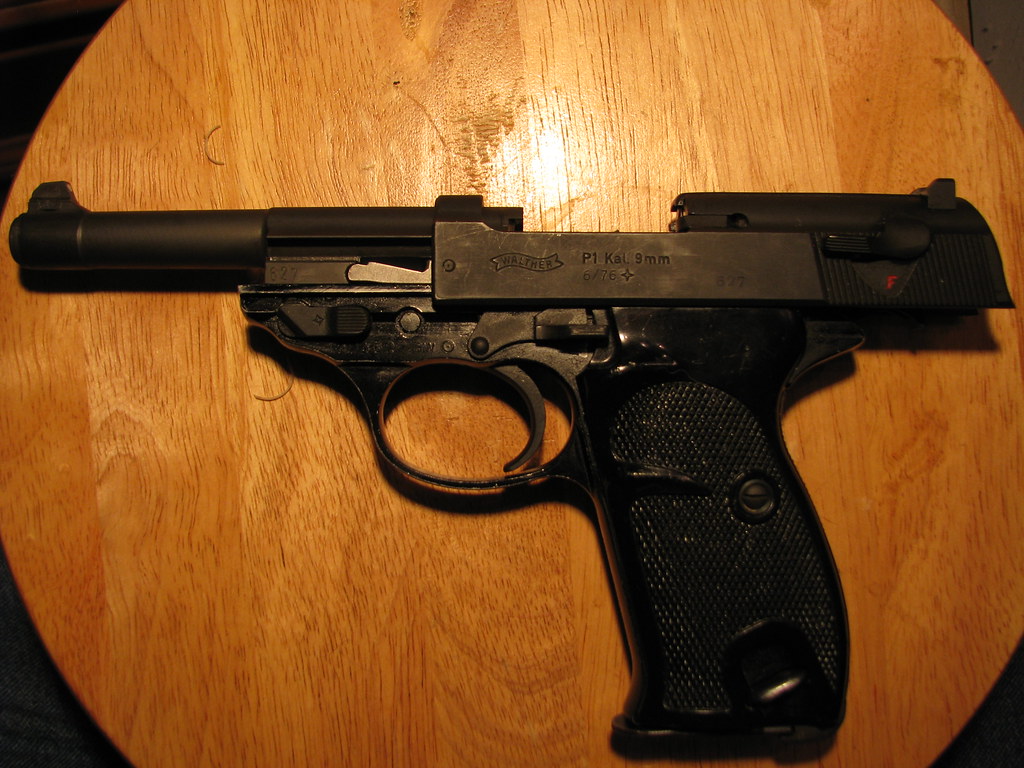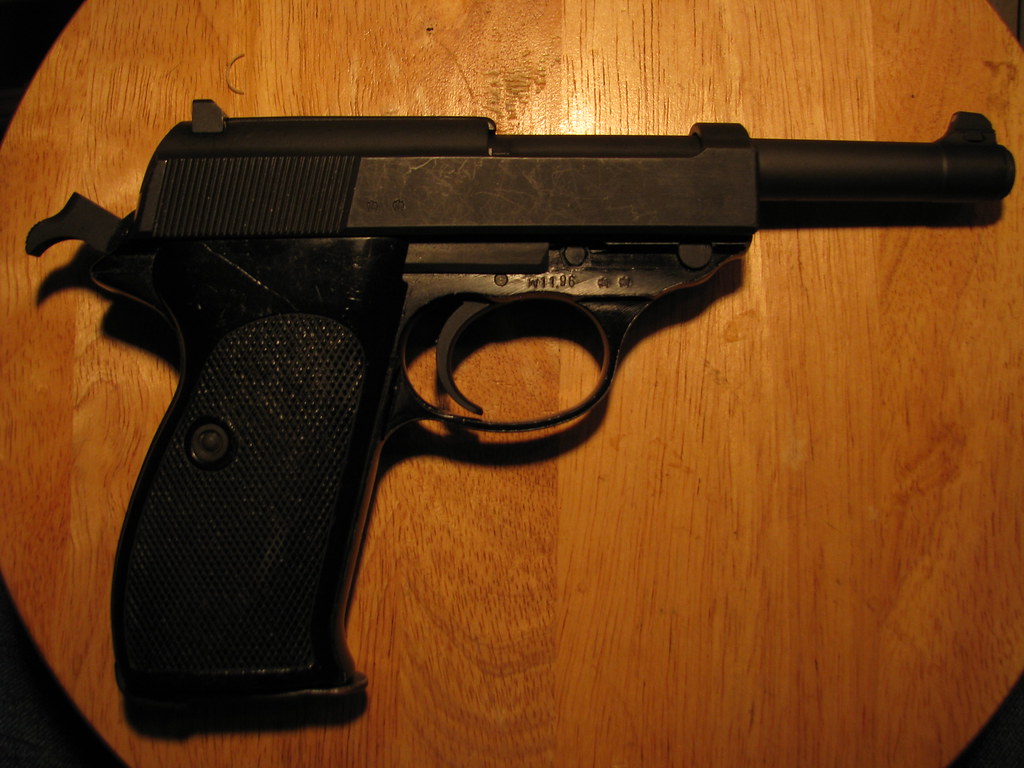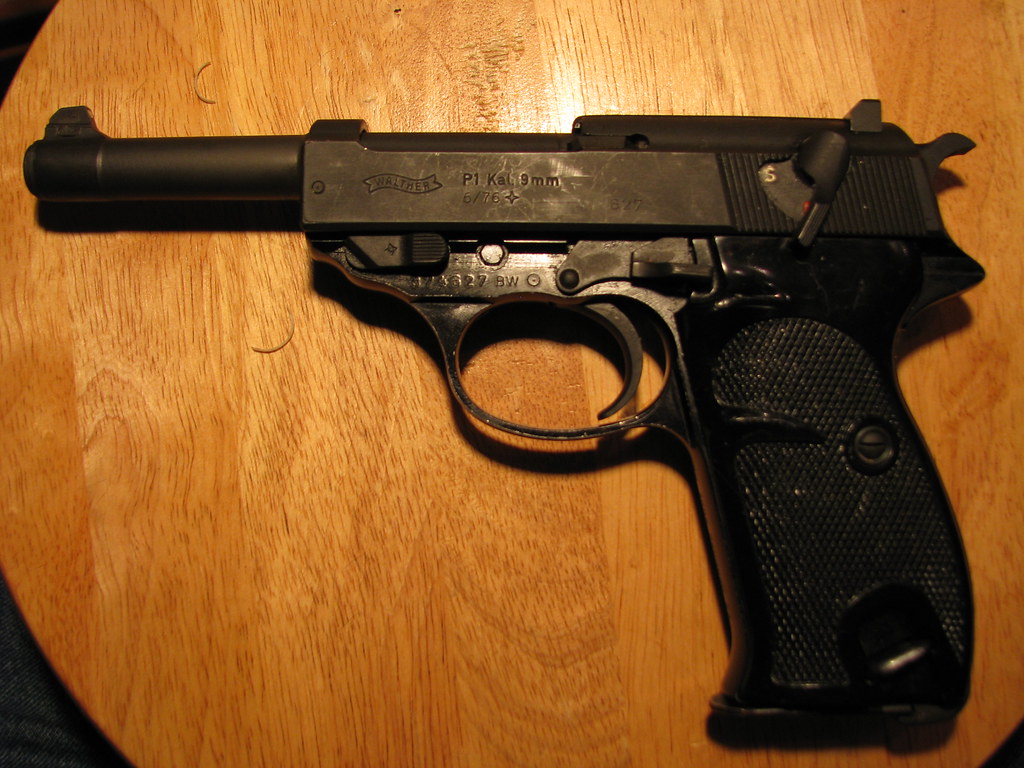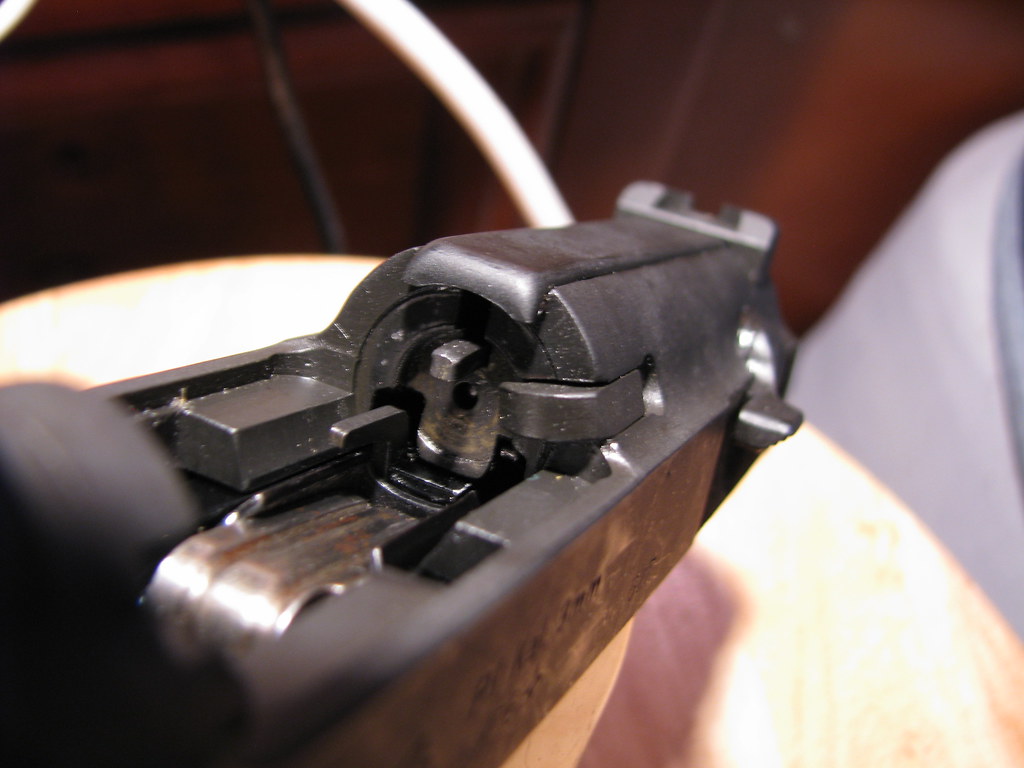Also known as the Walther P1.
I mentioned to a friend that I'd never fired a P38 and he brought over his P1 for me to play with.
The P1 is in essence a post-war manufactured P38. The very earliest were identical except for markings. Quickly production changed to the more common alloy frame.
There are more pics below the cut.
![]() |
| Sure is wide for a single stack 9mm. |
![]() |
| This is the locking bar in the locked position. It engages two recesses in the slide. |
![]() |
| Locked. The lug to the top of the silver part is what locks into the slide. The button sticking out on the right pushes a ramp and causes the locking bar to rotate unlocked. |
![]() |
| Unlocked. |
![]() |
| Unlocked. The lug on the bottom is also the barrel stop. It holds the barrel agains the frame while the slide recoils to the rear. |
![]() |
| Recoil springs. They sure are tiny... |
![]() |
| And they run inside the frame rails. |
![]() |
| You can tell it's a German design. The recoil springs bear against the intricately machined lug inside the slide. |
![]() |
| Recoil lug. |
![]() |
| Loaded chamber indicator. Tactile and visual. |
![]() |
| The safety is also a decocker. |
![]() |
| For some reason the P1 ejects left instead of right, like most semi-autos. The post sticking into the breech face is the chamber loaded indicator. Something interesting I noticed is that it is pushed up by the fresh cartridge then pushed back by the barrel shroud then it clicks back down behind the head of the round to show that it's loaded. |

